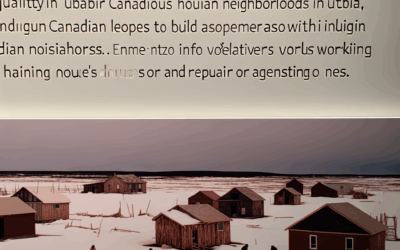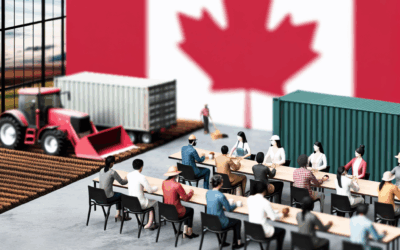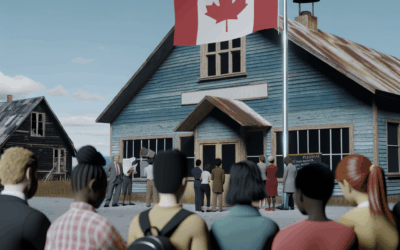The recent federal election has reshaped Canada’s political landscape. Whether Canadians have chosen a new Conservative government, returned the Liberals with a reduced mandate, or elected a coalition built on progressive cooperation, each outcome represents a distinct vision for dealing with economic nationalism south of the border.
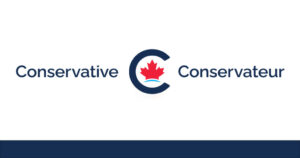 Under a Conservative Government: Assertive and Business-Oriented
Under a Conservative Government: Assertive and Business-Oriented
Should the Conservatives now hold power, expect a more direct and assertive response to any renewed tariffs. Conservatives are likely to pursue bilateral dialogue with Trump’s administration, possibly leveraging longstanding party-to-party relationships to influence outcomes. At the same time, they would likely respond with swift retaliatory tariffs to protect key industries like steel, aluminum, autos, and agriculture. Trade diversification would become a major focus. Expect efforts to fast-track trade agreements in the Indo-Pacific, strengthen ties with the UK, and deepen engagement with Latin America — all designed to reduce Canada’s reliance on U.S. markets.
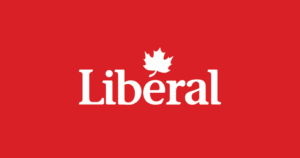
Under a Liberal or Progressive Coalition: Multilateralism and Legal Recourse
If the Liberals are governing — especially in a minority situation supported by the NDP or Greens — the tone may be more cooperative and rooted in international law. A Liberal-led Canada would likely lean heavily on institutions like the World Trade Organization and the dispute resolution processes embedded in the USMCA.
Diplomacy would remain the primary tool, but with a pragmatic twist: recent lessons from the first Trump era mean Canada may prepare retaliatory measures behind the scenes, even while projecting a rules-based, multilateral posture.
Sector Watch: Industries Most at Risk

Certain sectors remain especially vulnerable to renewed U.S. tariffs, and they’ll be watching closely for signs of protection. These include:
- Automotive and parts manufacturing in Ontario and Quebec
- Aluminum and steel production in Quebec and Western Canada
- Agriculture, especially supply-managed sectors like dairy, poultry, and grains
- Clean energy and EVs, which could become flashpoints in a U.S. vs. Canada subsidy race
- Federal and provincial governments will likely coordinate support packages, tax incentives, and subsidy protections if tariffs disrupt supply chains or lead to layoffs.
What the Future Could Look Like
Looking beyond 2025, Canada’s long-term response to U.S. protectionism will depend on how effectively its new government adapts to global economic trends and domestic pressures.
1. A Post-American Trade Strategy
Whether by necessity or design, Canada may accelerate the creation of a “post-American” trade strategy — not abandoning the U.S., but building enough resilience to weather future volatility. This means more deals in the Indo-Pacific, Africa, and Latin America, and building on existing frameworks like CETA and the CPTPP.
2. Economic Sovereignty Through Innovation
To lessen dependence on the U.S., Canada is expected to invest heavily in innovation, especially in AI, quantum computing, cleantech, and strategic manufacturing. Government incentives could focus on scaling homegrown technology companies, developing domestic supply chains, and reducing reliance on U.S. imports.
3. Strengthening Regional Diplomacy
Expect Canada to deepen its ties with U.S. states — particularly those with strong economic ties like Michigan, New York, and Washington. This subnational diplomacy could act as a buffer against federal-level tensions and help keep cross-border trade steady, especially in sectors like energy, automotive, and agriculture.
4. Domestic Pressure and Populist Undercurrents
With inflation still a concern and global supply chains fragile, any economic fallout from Trump’s tariffs could stir frustration at home. A strong government will need to communicate clearly, act decisively, and ensure economic supports are in place to protect workers — or risk opening the door to populist backlash and economic nationalism of its own.
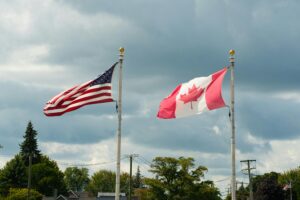
Conclusion: A Critical Moment for Canada’s Economic Identity
Canada’s 2025 federal election sets the stage for how it will face a potentially tumultuous era in global trade. If Trump returns to the White House and tariffs return with him, Canada must decide — quickly and strategically — how to defend its economy without undermining its values.
Whether through confrontation or cooperation, what’s clear is that the next few years will test Canada’s trade resilience like never before. And how it rises to meet that test will help define its economic identity for the next generation

